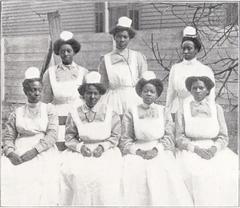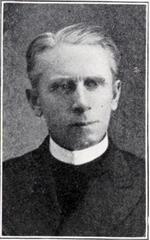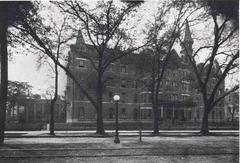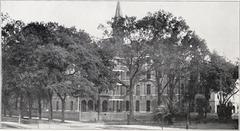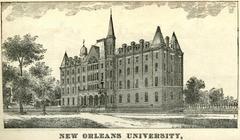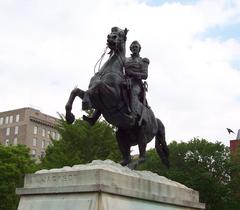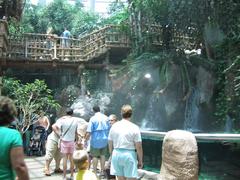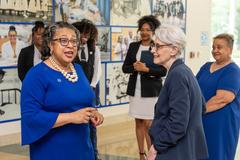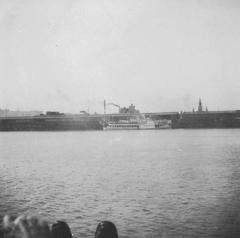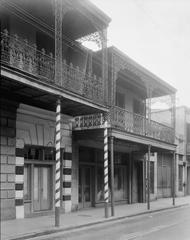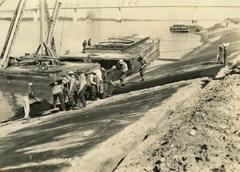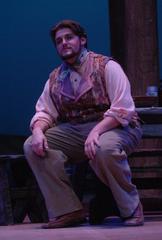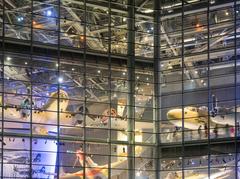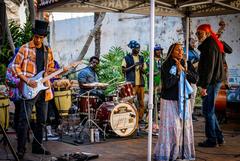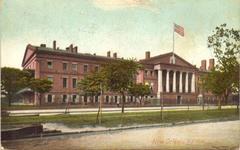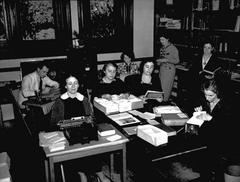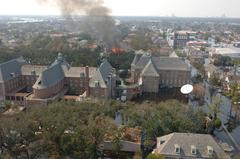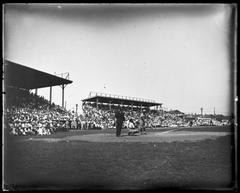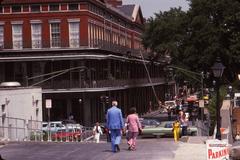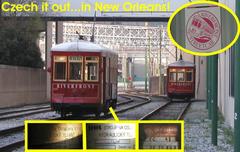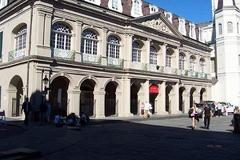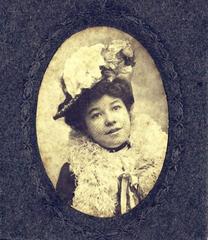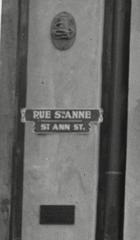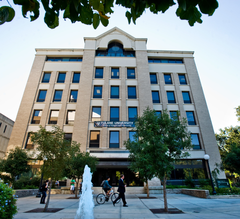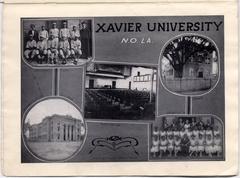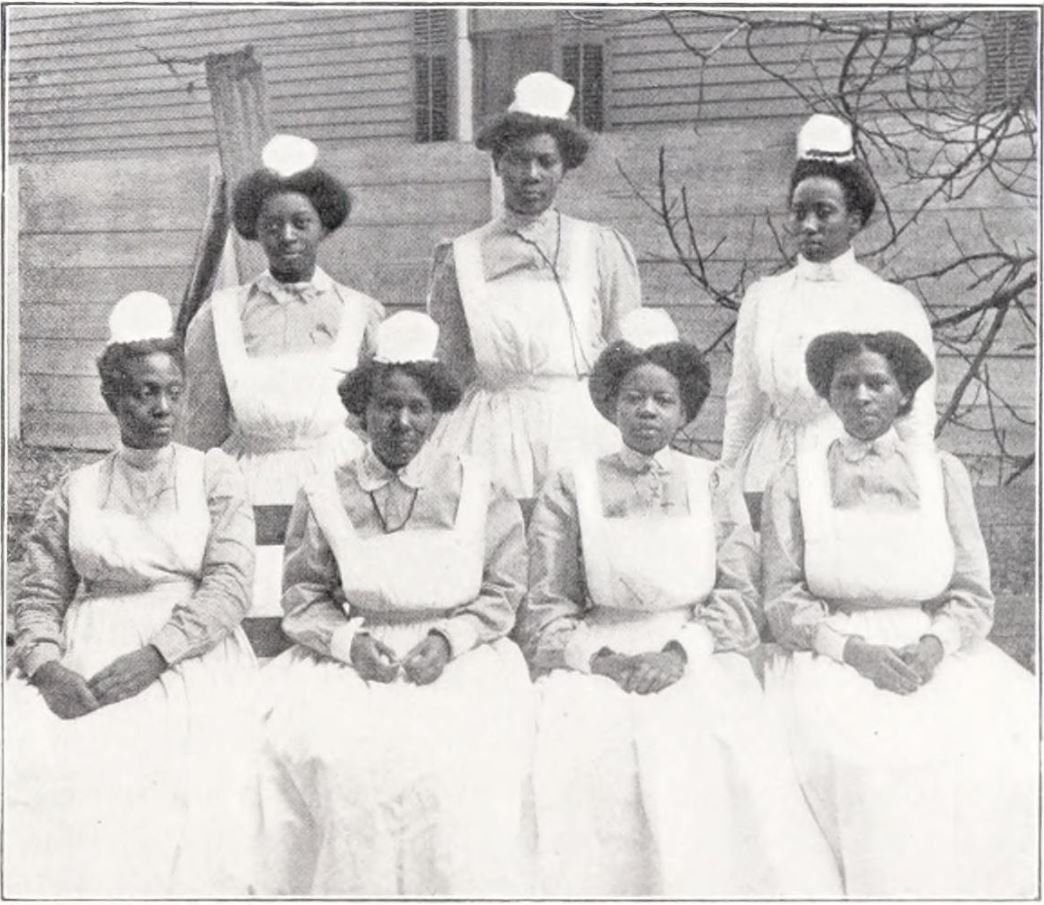
University of New Orleans Visiting Hours, Tickets, and Historical Sites Guide
Date: 14/06/2025
Introduction: Historical Significance and Visitor Overview
The University of New Orleans (UNO), located on the shores of Lake Pontchartrain, stands as a testament to academic innovation, cultural vibrancy, and historical progress in New Orleans. Established in 1956 to address the city’s lack of a public university, UNO quickly became a pioneer as the first racially integrated public university in the South (UNO History). Over the decades, UNO has grown into a premier urban research institution, renowned for its diverse academic offerings in engineering, hospitality, and marine architecture.
Visitors to UNO enjoy a campus where mid-20th-century modernist architecture meets lush green spaces and lakefront vistas. Guided tours, available Monday through Friday, offer immersive explorations of academic buildings, student life, and cultural venues. The University of New Orleans Monument, positioned near the Earl K. Long Library, pays tribute to the university’s founding and enduring community impact (UNO Monument Guide).
Beyond its educational role, UNO serves as a cultural nexus, hosting concerts, art exhibits, and athletic events. Its proximity to New Orleans icons such as the French Quarter, City Park, and the lakefront enhances its appeal for visitors and prospective students (UNO Visitor Guide).
This guide equips visitors with essential information on UNO’s history, academic strengths, visitor logistics including campus and monument visiting hours, accessibility, and travel tips. Whether you’re drawn by the university’s storied past, its vibrant campus culture, or the natural beauty of its setting, you’ll find all you need to plan a rewarding visit to this cornerstone of New Orleans.
Table of Contents
- Welcome to the University of New Orleans: History and Visitor Guide
- Founding and Early Development
- Racial Integration and Social Significance
- Growth, Academic Excellence, and Research
- Visiting the University of New Orleans
- Resilience and Community Impact
- Rankings and Recognition
- Discovering the University of New Orleans Monument
- University of New Orleans Visitor Guide
- Frequently Asked Questions (FAQ)
- Plan Your Visit and Stay Connected
- Jackson Square Monument: History and Visitor Information
- Summary and Encouragement to Explore UNO
- References and Official Links
Welcome to the University of New Orleans: History and Visitor Guide
UNO is a vibrant urban research university with a rich history and a welcoming campus on the scenic lakefront. Whether you’re a prospective student, history enthusiast, or a visitor exploring New Orleans, this guide provides a comprehensive overview of UNO’s historical evolution, academic strengths, visitor logistics, and tips for making the most of your visit.
Founding and Early Development
UNO was founded in 1956 through Act 60 of the Louisiana Legislature, born from a grassroots effort to establish public higher education in New Orleans, then the largest U.S. city without a public university (UNO History). The campus was established on a former U.S. Navy air station, facilitating rapid development and opening its doors to 1,460 freshmen in 1958 (UNO Foundation). Originally named Louisiana State University in New Orleans (LSUNO), the institution gained independence in 1974, becoming the University of New Orleans.
Racial Integration and Social Significance
UNO holds a unique place in history as the South’s first racially integrated public university, setting a progressive precedent and fostering an inclusive academic culture (UNO History).
Growth, Academic Excellence, and Research
Today, UNO is classified as an “R2: Doctoral Universities – High research activity” institution, offering an extensive range of programs: 40 bachelor’s, 45 master’s, and 17 doctoral degrees across eight schools and colleges (Wikipedia). The university is recognized for its engineering, hospitality, and marine architecture programs.
Visiting the University of New Orleans
Campus Tours and Visiting Hours
Guided campus tours are available Monday through Friday, 9:00 AM–4:00 PM, and provide a comprehensive look at academic, student life, and scenic spots along Lake Pontchartrain. Schedule a tour or group visit via the UNO Visitor Information page.
Accessibility and Admission
The campus is open to the public during visiting hours with free admission. Accessibility services are provided to ensure comfortable navigation for all visitors. Parking is available near main entrances with designated visitor spaces.
Special Events and Cultural Experiences
UNO hosts a variety of cultural events, including music performances, art exhibitions, and theater productions, many of which are open to the public. Check the events calendar for current offerings.
Photographic Spots and Nearby Attractions
Popular campus photo locations include the lakeside promenade, the UNO University Ballroom, and the student union. Off campus, visitors can easily access New Orleans attractions like the French Quarter and City Park.
Resilience and Community Impact
UNO has shown remarkable resilience in the face of adversity, notably post-Hurricane Katrina and during the COVID-19 pandemic, rapidly reopening and supporting its students and the wider community (Wikipedia).
Rankings and Recognition
UNO is consistently recognized for academic excellence and value, ranked 262nd in the U.S. and 995th globally in 2025 (EduRank). It appears on lists such as America’s Best Value Colleges and the Princeton Review’s Best 361 Colleges (UNO Foundation).
Discovering the University of New Orleans Monument
Monument Overview and Historical Background
The UNO Monument is a tribute to the university’s founding and significant role in New Orleans’ educational landscape. Located near the Earl K. Long Library, it features inscriptions and artistic elements reflecting UNO’s legacy of research, urban engagement, and diversity. The monument serves as a gateway for visitors to learn about UNO’s enduring influence.
Visiting Hours and Access
- Location: Near Earl K. Long Library, UNO campus
- Hours: Daily, 8:00 AM–6:00 PM
- Admission: Free
- Accessibility: Wheelchair accessible with paved pathways and ample parking
How to Get There
- By Car: Easily accessible from Interstate 10; on-campus parking available
- Public Transit: Served by local bus routes; check New Orleans Regional Transit Authority schedules
- Nearby Landmarks: After your visit, explore Ogden Museum of Southern Art and lakefront parks
What to Expect During Your Visit
The monument features plaques and installations narrating UNO’s history; informational kiosks provide further context. The surrounding campus offers scenic spots for photography and relaxation.
Tips for Visitors
- Wear comfortable shoes for walking
- Visit during daylight for the best experience
- Reference the university’s event calendar for special tours or commemorative events
Cultural and Educational Significance
The monument embodies New Orleans’ commitment to higher education and community development, reflecting the diversity and innovation that define both UNO and the city.
University of New Orleans Visitor Guide
Campus Setting and Architectural Features
UNO’s 195-acre campus is marked by mid-century modernist architecture, open green spaces, and integration with lakefront parklands. Pedestrian walkways connect academic, residential, and recreational facilities. Notable is the Human Performance Center, the university’s hub for athletics and community events.
Key Campus Highlights
- Human Performance Center: Hosts athletic events—including basketball and summer volleyball camps—equipped with modern training facilities (UNO Volleyball Camp).
- Earl K. Long Library: The academic heart of campus, offering extensive collections, study spaces, and hosting scholarly events.
- Lakefront Arena: A multi-purpose venue with 10,000+ seats for sports, concerts, and community events.
- Research Labs: UNO supports undergraduate research in environmental sciences, engineering, and coastal studies (UNO Undergraduate Research).
Attractions and Points of Interest
- Lake Pontchartrain & Lakefront: Walking and biking trails, picnic areas, and marinas (UNO Visit Us).
- French Quarter & Downtown: Historic sites, music venues, restaurants, and museums are a short drive away (Earth Trekkers: Best Things to Do in New Orleans).
- Campus Art & Culture: Regular exhibitions, performances, and festivals showcase campus creativity.
Practical Visitor Information
- Visiting Hours: Monday–Friday, 7:00 AM–10:00 PM; limited weekend access. Individual facilities may have different hours (UNO Visit Us).
- Tickets: Entry is free; some events and venues (e.g., Lakefront Arena) require tickets, which can be purchased online or at box offices.
- Guided Tours: Free by appointment for prospective students, families, and groups; self-guided virtual tours are also available (UNO Campus Tours).
- Accessibility: ADA-compliant facilities and routes; consult UNO accessibility services online.
- Dining: On-campus cafes and food courts; nearby New Orleans restaurants offer diverse cuisine.
- Safety: Campus police patrols and emergency call stations enhance security.
- Visitor Services: Information centers provide maps, schedules, and assistance.
Special Events & Photography
Events such as open houses, athletic tournaments, and festivals offer immersive experiences. Top photographic spots include the lakefront, Human Performance Center, Lakefront Arena, and campus art installations, especially at sunrise and sunset.
Nearby Attractions and Local Exploration
Explore City Park, New Orleans Museum of Art, and the Sydney and Walda Besthoff Sculpture Garden (Earth Trekkers). The Garden District and Uptown neighborhoods offer historic architecture, shopping, and live music. Lakefront trails are excellent for jogging and birdwatching.
Academic and Cultural Engagement
UNO promotes academic excellence and community involvement through research, public lectures, and partnerships with local organizations. Visitors can attend conferences, art shows, and forums to experience UNO’s role as a hub for innovation and cultural exchange.
Jackson Square Monument: History and Visitor Information
Overview and Historical Significance
Jackson Square, in the heart of the French Quarter, is one of New Orleans’ most iconic sites. Established as Place d’Armes in 1721 and renamed for Andrew Jackson in honor of his defense of the city in 1815, the square is home to the famed equestrian statue of Jackson (unveiled in 1856). Surrounded by historic buildings like St. Louis Cathedral, the Cabildo, and the Presbytère, Jackson Square embodies the city’s colonial past and cultural richness.
Visiting Hours and Tickets
Jackson Square is open to the public 24/7, with no admission fee. Surrounding attractions have specific hours:
- St. Louis Cathedral: Daily, 8:00 AM–4:00 PM; free
- Cabildo Museum: Tuesday–Sunday, 9:00 AM–4:30 PM; $8 adults
Check official sites for seasonal or event-related changes.
Guided Tours & Experiences
Guided and self-guided walking tours of Jackson Square and the French Quarter are widely available, offering historical insights and photo opportunities—especially at sunrise or sunset, with the monument and cathedral as dramatic backdrops.
Cultural Events and Festivals
Jackson Square regularly hosts art markets, music performances, and festive events like Mardi Gras parades, providing visitors with a taste of New Orleans’ vibrant culture.
Accessibility and Visitor Facilities
The square is wheelchair accessible with paved paths, ramps, public restrooms, and plenty of benches. Cafes and restaurants nearby offer a true taste of New Orleans cuisine.
Nearby Attractions
- St. Louis Cathedral: The oldest continuously active Catholic cathedral in the U.S.
- The Cabildo: A museum of Louisiana history
- Presbytère: Exhibits on Mardi Gras and Hurricane Katrina
- French Market: Local crafts and food stalls
Practical Tips
- Best Time to Visit: Early morning or late afternoon for fewer crowds and cooler temperatures
- Photography: Golden hour offers the best lighting
- Safety: Safe during the day; exercise usual caution at night
Visuals and Media
Frequently Asked Questions (FAQ)
University of New Orleans FAQs
-
Q: What are the campus visiting hours?
A: Monday–Friday, 7:00 AM–10:00 PM; some buildings have specific hours. -
Q: Are guided tours available?
A: Yes, free guided tours are available by appointment. -
Q: Is there an admission fee?
A: No, campus entry and tours are free; event tickets may be required for certain venues. -
Q: Is the campus accessible for visitors with disabilities?
A: Yes, all main facilities are ADA-compliant. -
Q: Where can I buy event tickets?
A: Tickets are available via the UNO events website or at box offices. -
Q: What are the best spots for campus photography?
A: The lakefront, Human Performance Center, Lakefront Arena, and art installations.
Jackson Square FAQs
-
Q: Is there an entrance fee to visit Jackson Square?
A: No, access is free. -
Q: Are guided tours available?
A: Yes, guided and self-guided tours are available. -
Q: Can I take photos at the monument?
A: Yes, photography is encouraged. -
Q: Is Jackson Square accessible for visitors with disabilities?
A: Yes, with paved paths and ramps. -
Q: What are the nearby attractions?
A: St. Louis Cathedral, the Cabildo, the Presbytère, and the French Market.
Plan Your Visit and Stay Connected
UNO is more than an educational institution—it’s a dynamic part of New Orleans’ heritage. Plan your visit by checking official websites for up-to-date hours, tours, and event schedules. Use the Audiala app for interactive maps and event notifications, and follow UNO’s social channels for news and tips. Related posts and digital resources offer further insights into the campus and city.
Summary and Encouragement to Explore UNO
The University of New Orleans is a landmark of resilience, diversity, and academic achievement. From its trailblazing integration to its status as a research powerhouse, UNO fosters innovation and community engagement (Wikipedia). The campus’s architectural highlights, vibrant events, and the UNO Monument celebrate its historical and ongoing contributions. With accessible facilities, free admission, and strategic location near New Orleans’ top attractions, UNO is a must-visit for students, history buffs, and travelers alike (UNO Visit). Plan your trip, take a guided tour, and immerse yourself in the authentic spirit of UNO and New Orleans (UNO Foundation).
